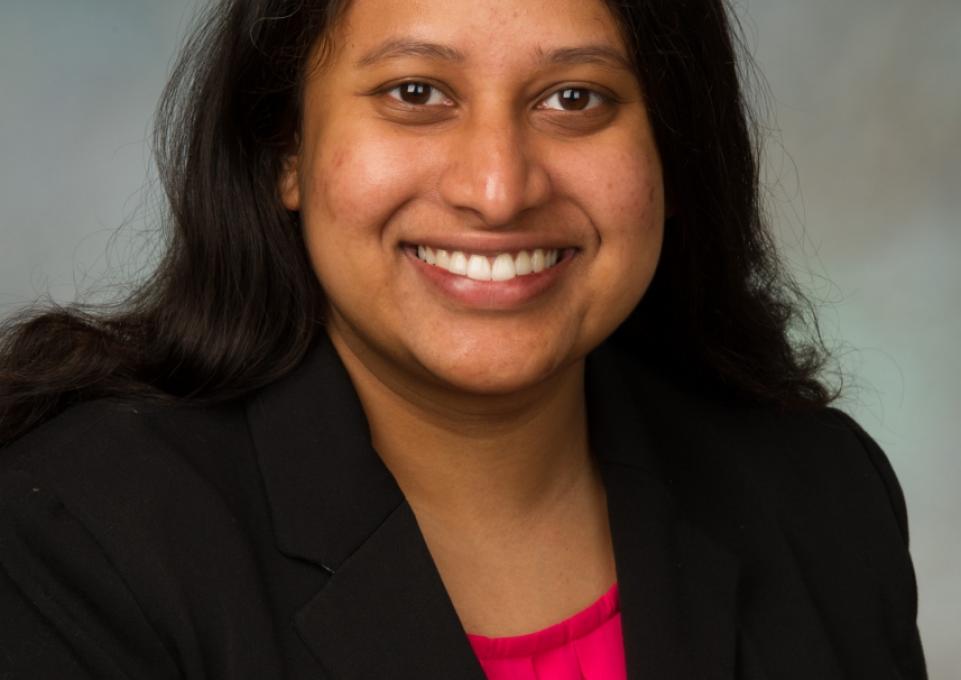
When NASA confirmed that water had been found on Mars, Hiruni Senarath Dassanayake wasn’t surprised. She had already studied water-related features on Mars. “Although Mars has been a dry planet for a very long time,” she said, “there are younger features that show a relatively recent flow of water.”
Thanks to an Undergraduate Summer Research Fellowship from the Undergraduate Research Office, Senarath Dassanayake spent eight weeks this summer mapping a section of Mars. “There was one quadrangle in the Margaritifer Terra region of Mars that I started to map,” she said, “but I noticed some interesting formations in five craters near the quadrangle. So I focused on them instead.”
She was intrigued by features such as alluvial fans, channels, and gullies indicating water-related activity that occurred over time. “One crater seemed to have had a lake once,” she said. Senarath Dassanayake explained that studying terrestrial geology helps scientists understand the geology of other planets and moons.
A native of Sri Lanka, Senarath Dassanayake has been fascinated by science ever since she was a little girl. In high school, she studied physics with the idea of becoming an astrophysicist. When she took a course about the solar system from Kevin Williams, a planetary geologist and associate professor of earth sciences and science education, she became interested in studying the planets. “I would love to go to Mars,” she said, “as long as it’s a round trip!”
Senarath Dassanayake will present her research at the 2015 Geological Society of America (GSA) annual meeting in Baltimore, Maryland, in November with the support of GSA’s On To the Future program. Williams served as her mentor on the project.
“I worked really hard, but I enjoyed it,” Senarath Dassanayake said. “I want to follow my passion, follow my heart, and contribute to scientific knowledge.”
“Undergraduate research enables students to learn, in a hands-on way, how scientific knowledge is acquired,” said Williams. “As they conduct their own research, they become scientists themselves. We are very fortunate to have support for undergraduate research here at Buffalo State.”
Senarath Dassanayake presented a poster session and display on "Using Arctic Ice Thickness and Floe Size to Estimate Ice Thickness on Europa" at the 17th annual Student Research and Creativity Celebration, held May 1–2.
